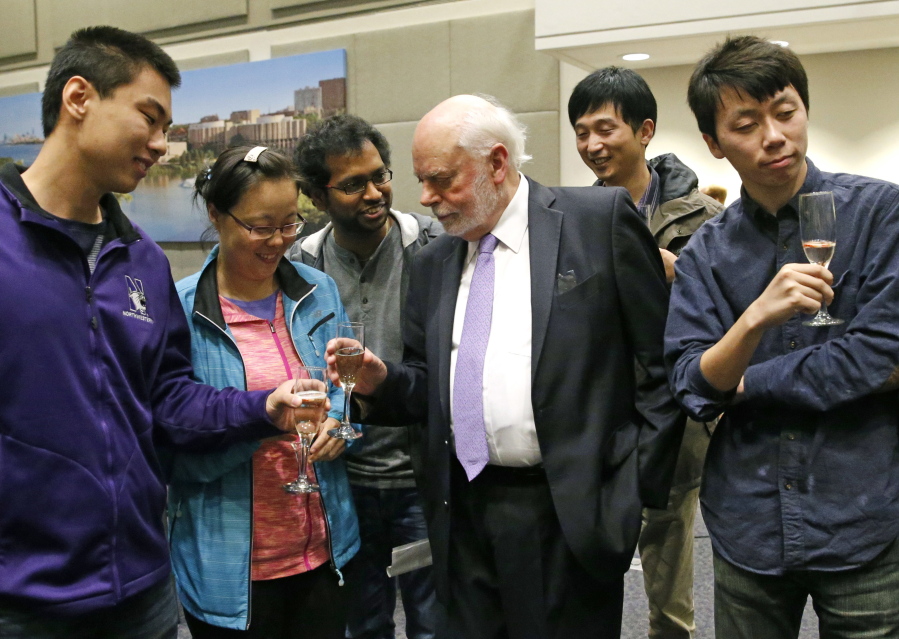Three scientists won a Nobel Prize in chemistry Wednesday for advances in a field that has big hopes for very tiny machines — the smallest ever built.
Frenchman Jean-Pierre Sauvage, Scottish-born Fraser Stoddart and Dutch scientist Bernard “Ben” Feringa were honored for making devices the size of molecules, so tiny that a lineup of 1,000 would stretch about the width of a human hair.
Someday, experts say, such devices might lead to benefits like better computer chips and batteries, and tiny shuttles that could be injected into patients to deliver drugs directly to infections and tumors. But that’s a long ways away.
“There are not big applications looming up tomorrow,” said Stoddart, 74, a professor at Northwestern University in Evanston, Ill., who became a U.S. citizen in 2011.
Feringa, 65, is a professor of organic chemistry at the University of Groningen, the Netherlands. Sauvage, 71, is professor emeritus at the University of Strasbourg and director of research emeritus at France’s National Center for Scientific Research.
The three men share the 8 million kronor ($930,000) prize, having “taken chemistry to a new dimension,” the Royal Swedish Academy of Sciences said.
The academy said Sauvage made the first breakthrough in 1983 when he linked two ring-shaped molecules together in such a way that they could move in relation to each other. Moving parts are key to a machine.
Stoddart took the next step in 1991 by threading a molecular ring onto a molecular axle and showing the ring could move back and forth. By 1994, he could completely control that movement. His group later built a tiny elevatorlike machine and an artificial muscle.
Feringa built the first molecular motor in 1999, a molecule that could be made to spin in just one direction. He leads a research group that in 2011 built a “nanocar,” a minuscule vehicle with four molecular motors as wheels.
The academy said the laureates’ work has inspired others to build increasingly advanced molecular machinery.



